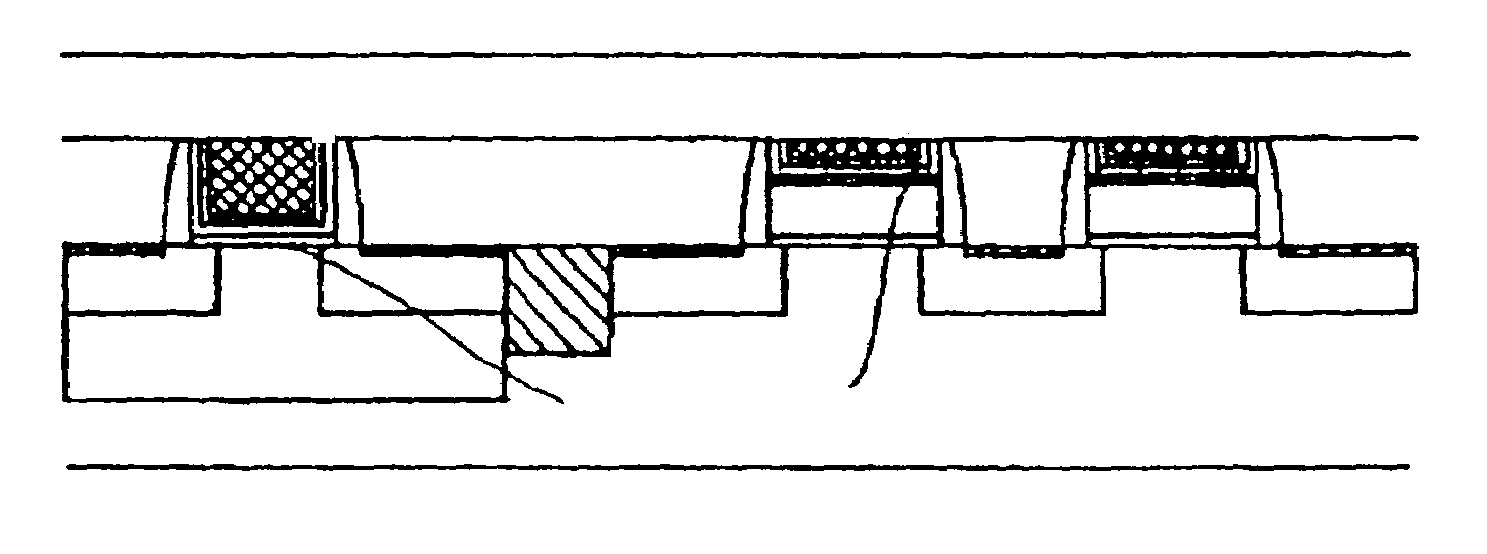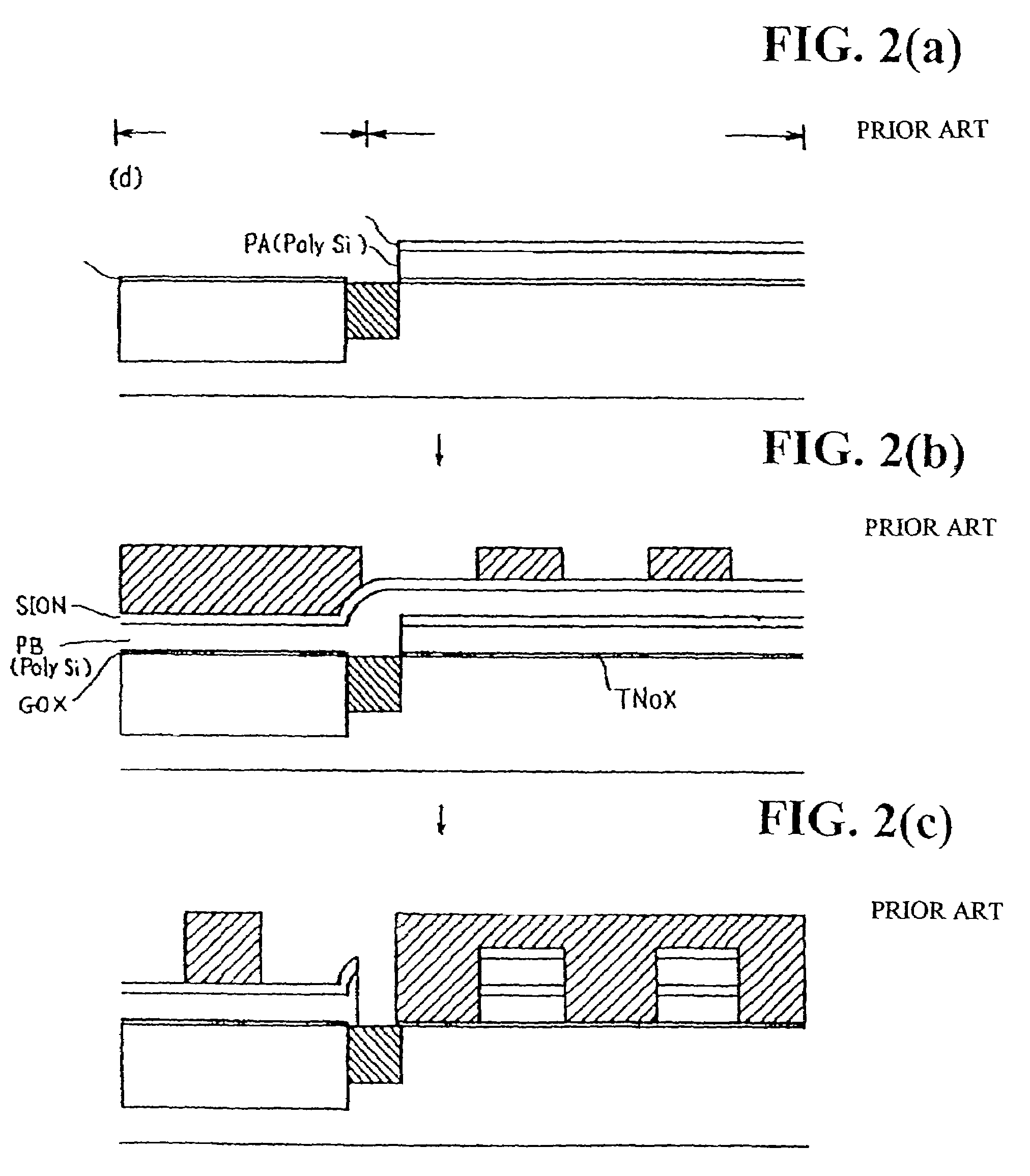Semiconductor device and its manufacturing method
a semiconductor and manufacturing method technology, applied in the direction of semiconductor devices, electrical devices, transistors, etc., can solve the problems of increasing the likelihood of oxide film deterioration, the inability to raise the gate capacitance beyond a certain threshold, and the inability to achieve the effect of high degree of integration
- Summary
- Abstract
- Description
- Claims
- Application Information
AI Technical Summary
Benefits of technology
Problems solved by technology
Method used
Image
Examples
Embodiment Construction
[0095]FIGS. 5 through 8 show cross-sectional views [A-A′ direction] of element regions configured in the first application embodiment of the present invention based on the damascene gate technique, and they show cross-sectional views of the element regions during the respective processes in proper order. FIGS. 9 through 13 show cross-sectional views [B-B′ direction] of a segment of the non-volatile memory cell region of the first application embodiment of the present invention based on the damascene gate technique from which an isolating insulation film has been removed (common source region), and they show cross-sectional views of the segment of the non-volatile memory cell region from which an isolating insulation film has been removed (common source region) during the respective processes in proper order. FIGS. 14 through 17 show cross-sectional views [C-C′ direction] of the word line direction of the non-volatile memory cell region of the first application embodiment of the pres...
PUM
 Login to View More
Login to View More Abstract
Description
Claims
Application Information
 Login to View More
Login to View More - R&D
- Intellectual Property
- Life Sciences
- Materials
- Tech Scout
- Unparalleled Data Quality
- Higher Quality Content
- 60% Fewer Hallucinations
Browse by: Latest US Patents, China's latest patents, Technical Efficacy Thesaurus, Application Domain, Technology Topic, Popular Technical Reports.
© 2025 PatSnap. All rights reserved.Legal|Privacy policy|Modern Slavery Act Transparency Statement|Sitemap|About US| Contact US: help@patsnap.com



